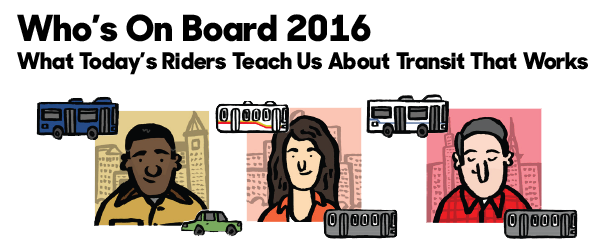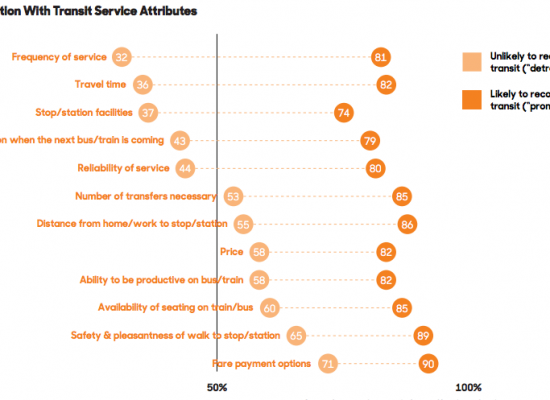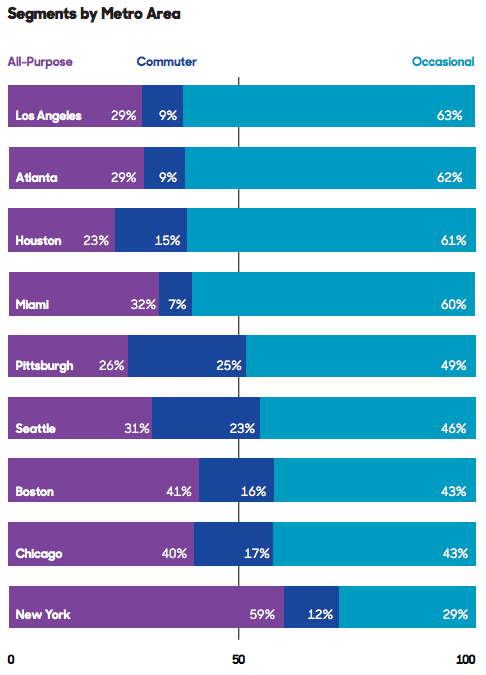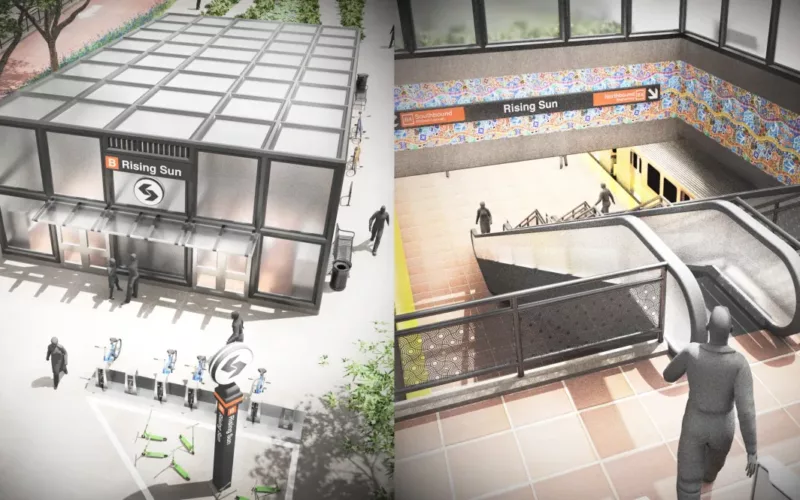
Fast, frequent transit that people can walk to is the key to increasing urban transit ridership.
That’s the main conclusion of “Who’s On Board 2016: What Today’s Riders Teach Us About Transit That Works,” the latest edition in TransitCenter’s Who’s On Board series of national transit rider opinion studies. Drawing on results from three focus groups and a survey of 3,000 people in 17 metropolitan areas across the country, Who’s On Board offers several core findings to inform how government agencies and elected officials approach transportation, land use, and development policy.
The most important “first mile/last mile” solution is walking

The majority of transit riders typically walk to transit, and the percentage is largest among those who use transit most frequently. This finding underscores the importance of putting transit stations in busy, walkable neighborhoods; building offices and housing within walking distance of transit; and providing more and safer pedestrian routes to transit.
Riders care about frequency and travel time. Wi-Fi? Not so much.

The two most important determinants of rider satisfaction with transit are service frequency and travel time. The availability of information and conditions at the train station or bus stop were also important, suggesting that real-time information and shelters are important amenities for transit agencies to provide. On the other hand, power outlets and Wi-Fi were rated the least important items out of a list of 12 potential service improvements.
There are three common patterns of transit use…
…occasional riders who take transit once in awhile, commuters who take transit regularly but only for work, and all-purpose riders who take transit regularly for multiple reasons. The mix of these groups varies significantly by city:

All-purpose riders are more prevalent where it’s easy to walk to transit, and where transit is frequent and provides access to many destinations. Transit agencies should strive to increase their number, as they are the most reliable and financially efficient customers to serve.
Transit agencies can take no one for granted
For decades, transportation professionals have talked about two kinds of transit riders: car-owning “choice riders” who use transit when it meets their needs, and carless “captive riders” who will use transit regardless of its quality.
Who’s On Board finds that the “captivity” of carless riders is severely overstated. People who live and work near better transit ride transit more often, whether or not they own cars. When transit becomes functionally useless, there are very few people who will continue to use it—a fact made plain by the nationwide decline in bus ridership in cities that cut service during the Great Recession.
Transit that doesn’t follow these simple rules–like commuter rail with parking lots at every station or slow streetcars that don’t connect to other transit–tends to perform poorly. Frequent transit networks in walkable neighborhoods, on the other hand, reduce reliance on cars, spark economic growth, and create the vibrant urban places we know and love.
To speak with TransitCenter about the report findings, contact Steven Higashide at shigashide [at] transitcenter [dot] org or 646-435-0658.
 On the Brink: Will WMATA’s Progress Be Erased by 2024?
On the Brink: Will WMATA’s Progress Be Erased by 2024?
The experience of being a WMATA rider has substantially improved over the last 18 months, thanks to changes the agency has made like adding off-peak service and simplifying fares. Things are about to get even better with the launch of all-door boarding later this fall, overnight bus service on some lines starting in December, and an ambitious plan to redesign the Metrobus network. But all of this could go away by July 1, 2024.
Read More To Achieve Justice and Climate Outcomes, Fund These Transit Capital Projects
To Achieve Justice and Climate Outcomes, Fund These Transit Capital Projects
Transit advocates, organizers, and riders are calling on local and state agencies along with the USDOT to advance projects designed to improve the mobility of Black and Brown individuals at a time when there is unprecedented funding and an equitable framework to transform transportation infrastructure, support the climate, and right historic injustices.
Read More